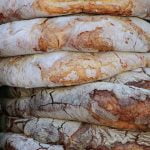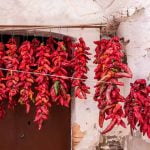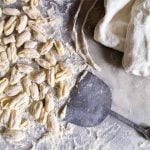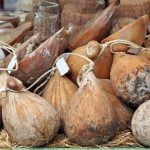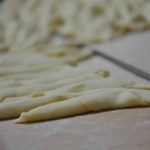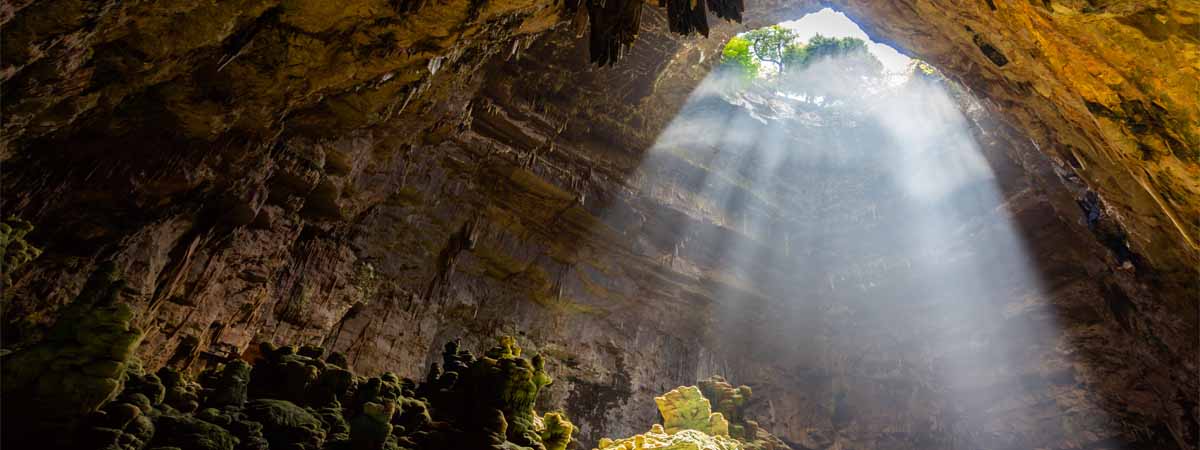Food and Wine Of Basilicata
The region of Basilicata, positioned at the southern end of Italy, is charming and picturesque, with mountains, rolling hills, and scenic coastlines in both the east and the west. But perhaps the only thing more compelling than its generous people and breathtaking landscape is the savory, traditional cuisine.
As in much of Italy, pane (bread) and pasta are tried and true staples of many dishes of Basilicata. Historically, bread and pasta were considered fundamental to citizens’ regular diets for much of the area’s existence, as it was periodically plagued with poverty and difficult living conditions. In those seasons of life, and still today, these two dietary staples are considered to be creature comforts by locals that nourish the heart and soul.
The region is famous for several different varieties of bread including Varone, the Pane di Rivello, and Ficcilatidd. However, Pane di Matera is the star of the show and considered to be nothing short of holy by locals in Matera. This ancient crunchy bread is unique in its ingredients of locally grown wheat (known as Senatore Cappelli) and yeast made from a fresh fruit starter. In years past, rural women made the dough in the evenings, leaving the dough to rise overnight before a local baker would collect the small town’s loaves the following morning to bake in the large public wood oven. To prevent the baker from mixing up each home’s culinary creation, the woman would press the dough with a personalized wooden stamp featuring initials that identified the family. These wooden stamps are still used today and their creation and personalization make for a perfect souvenir.
The other regional staple, durum wheat pasta, is still molded and formed using ancient tools such as the rasola (shaping blade), cavarola (chopping board), and maccarunara (brass instrument that cuts long pasta shapes). These traditional tools create some unique forms of local pasta such as minuich and tria that are popular amongst many eateries.
The peperone crusco di Senise, a sweet red pepper with a smoky taste, is a part of virtually every dish of Basilicata and has been for hundreds of years. The pepper can be eaten fresh, however in Basilicata it is most commonly dried in the sun (and sometimes crushed into a powder) before being added to local dishes. The pepper is considered a mandatory cultural experience and graces kitchen tables across the area morning, noon, and night.
Appetizer
Falagoni Lucani are a dish resembling small calzoni. The half circle dough pockets are filled with a variety of vegetables, most often chard or potatoes as well as local cheeses, such as scamorza.
Another regional favorite is caciocavallo podolico, a stretched-curd cheese made only from the milk of the podolica cattle breed. This teardrop shaped cheese with a firmer rind is considered the noblest of cheese varieties in Italy. A delight eaten all on its own, caciocavallo is rarely an ingredient of cooked dishes and is instead enjoyed at the beginning or end of a meal paired with wine.
Considered to be the sausage of the poor, salame pezzente is a delicacy distinctive of Basilicata and other regions of southern Italy such as Calabria and Apulia. The sausage consists of pieces of pork, such as fat, that were leftover after other products, such as prosciutto or sopressata, were made. Salame pezzente is delightfully seasoned with fennel and crushed peperone crusco (dried red pepper) before being preserved in lard, olive oil, or hung in a cool, dry place. This local specialty is typically served with vegetables and it is an integral part of 'Ndruppeche, which is Potenza's ragù.
Another noteworthy sausage is the Lucanica di Picerno, which has ancient origins. This sausage is made from pork and is distinctive due to its "U" shape and ruby red color. It is typically flavored with wild fennel seed, though certain variations can feature sweet or spicy chili peppers.
First Course in Basilicata
Basilicata is considered to be one of the regions in Italy where the largest amounts of pasta are consumed and a variety of handmade shapes are local to the region.
Lagane are often referred to as the ancestors of present day pasta and are similar in shape to lasagne. Lagane are made from durum wheat and can be prepared with chickpeas or a rich and meaty ragù. Local lore dictates that because of the simplicity and richness of this particular dish, it was a favorite food of the briganti (bandits) who wandered in the Vulture forests during the second half of the nineteenth century.
Strascinati are homemade pasta common to the region. This pasta shape is double sided with one side that is smooth and another that is rough (resembling a large version of orecchiette) with a wrinkled appearance that helps to effectively absorb sauces and other ingredients. Strascinati are radically simple in preparation, but combined with vegetables, seafood, tomato sauces, and spices they are considered a savory delight for locals and tourists alike.
Other popular pasta shapes in Basilicata include cavatelli, orecchiette, ferretti, manate, and maccaronara. These pasta shapes can be served with many different local ingredients, such as dried senesi peppers or breadcrumbs.
Second Course
Pane cotto or pancotto is a traditional Italian soup prepared with stale pieces of bread boiled in seasoned broth or water. While the dish is common throughout southern Italy with ingredients that vary based on the season, Basilicata has its own traditional recipe featuring roasted or grilled pieces of bread. The bread is served in the broth and can be topped with small quantities of meat (sausage, lard, or pancetta) as well as dried red pepper, and grated cheese.
Pecora alla pignata, also known as Cutturidd, is an ancestral dish that is now considered a typical Easter dish of Basilicata. With roots in the local pastoral tradition, the dish consists of a lamb stew with vegetables and local herbs cooked in a traditional terracotta pot (pignata).
Other key dishes include baccalà alla lucana (salted cod with dried red peppers), frascatula (a polenta dish served with sauce, sausage, or vino cotto), and rafanata (a thick frittata made with horseradish, potatoes, and pecorino cheese).
Sides and Unique Products
Fagioli di Rotonda are white beans only cultivated in the Province of Potenza, particularly in Pollino. They are slow in maturation, rich in protein, and sold both dried and fresh. The legumes are common in many local recipes and are said to have been appreciated by Italian patriot Giuseppe Garibaldi, who wanted the seeds sown on his island.
Canestrato di Moliterno and Pecorino di Filiano are two outstanding cheeses that are widely popular in the region. Canestrato di Moliterno is a cheese made from sheep and goat milk that is aged in the unique grottos of Moliterno. Pecorino di Filiano is a cheese made from the milk of a Gentile di Lucania sheep that is then aged for a minimum of 180 days in local tuff grottos.
Also in high demand is Marroncino di Melfi, a round chestnut typical of the Vulture area. Its presence in marron glacé, a widely popular European dessert, makes it an essential ingredient for homes and eateries throughout the region. In Melfi, the chestnut is commonly roasted and enjoyed with a glass of Aglianico del Vulture, especially during the area’s Chestnut Festival.
Desserts in Basilicata
The town of Lauria in the province of Potenza, boasts one of Basilicata’s most coveted desserts—Anginetti di Lauria. These delicate sweets are made with flour, sugar, eggs, and olive oil and are sometimes flavored with anise seeds or fennel. After they have been baked to perfection and given time to rest, these cookies are liberally glazed with sugar and lemon.
Scorzette, or meringue cookies made from egg whites, hazelnuts or almonds, and dark chocolate, are the perfect treat to serve up with a hot cup of coffee or liqueur. The cookie’s name is derived from the local dialect and means “bark”, which is indicative of the treat’s unique shape.
Strazzate materane are delicious crunchy cookies prepared when celebrating the Christmas holiday. The main ingredients for this sweet delicacy are almonds, eggs, and cocoa. If properly preserved and made with quality ingredients, these cookies hold up well and can last for months, making them the perfect treat to enjoy on the plane ride home and even later, perhaps barefoot in your own kitchen with a steaming cup of joe.
Some other desserts that are common throughout southern Italy have distinct variations that can be found in Basilicata. One example are Bocconotti, pastries that in Basilicata are typically filled with black cherry jam, orange jam, or custard. Also of note is Cicerata, a typical Christmas dessert that consists of small, fried pieces of dough that are stacked into a pyramid shape and drizzled in honey.
Finally, a dessert native to Potenza is called pan minisc' (or paparotta). This historic treat tied to the local grape harvest was originally enjoyed by the farmers in the region for a boost of energy during a long day of work. Pan minisc' has a bread-like texture and is made from grape must, flour, and sugar.
Basilicata's Wines
The Aglianico di Vulture is by far one of the best full-bodied wines in Italy. This red wine that can have a chocolate-cherry note is made with the Aglianico grape and is produced locally in Basilicata. Its elegant fragrance pairs perfectly with all of the Podolica meat.
Other popular red wines of the region include Terre dell’Alta Val d’Agri and the Grottino di Roccanova.
Though red wines are more prevalent in the area, one noteworthy white wine is Matera Greco. This flavorful wine is a perfect match for local seafood, especially spaghetti with mussels.
Basilicata’s traditional savory cuisine and full-bodied wines make eating and drinking your way through southern Italy truly a slice of paradise.
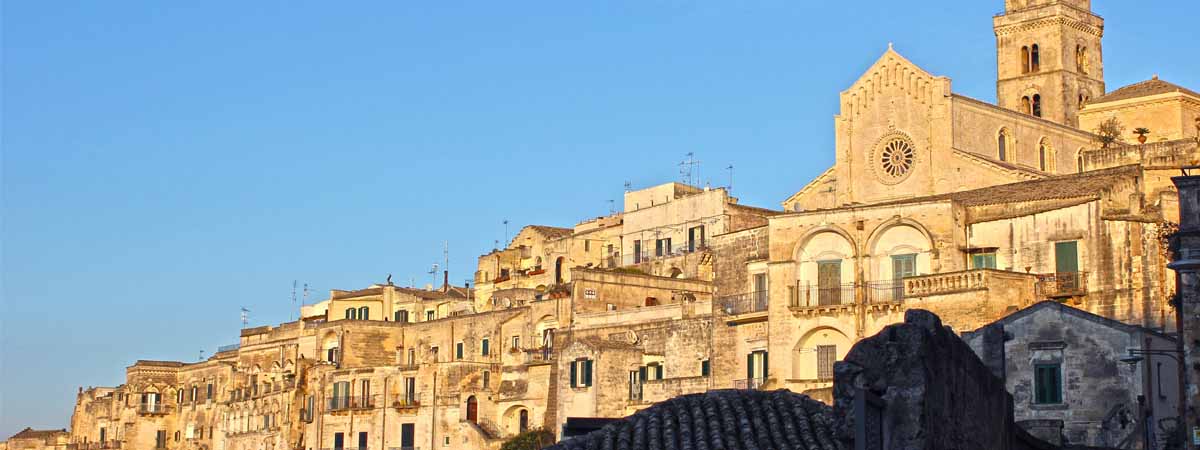

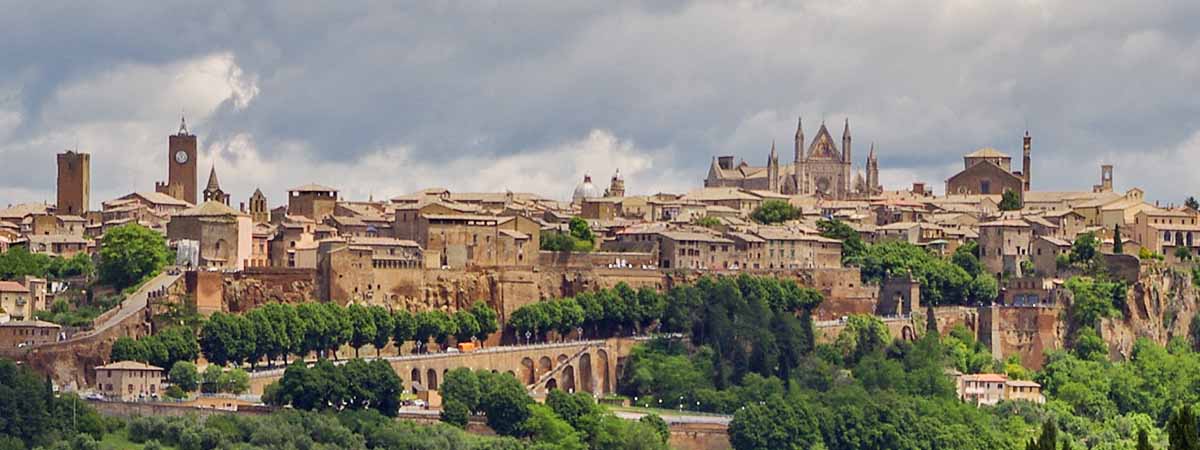
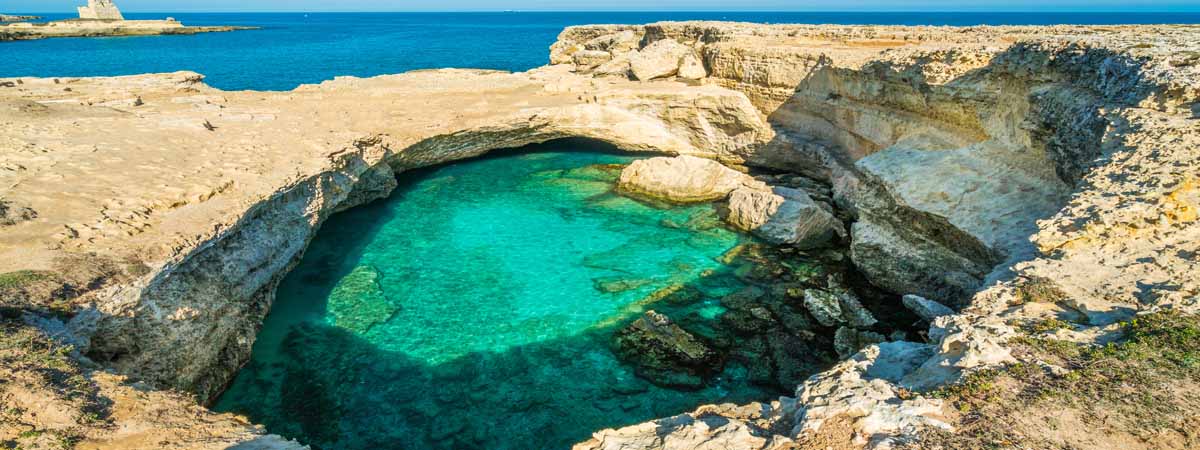
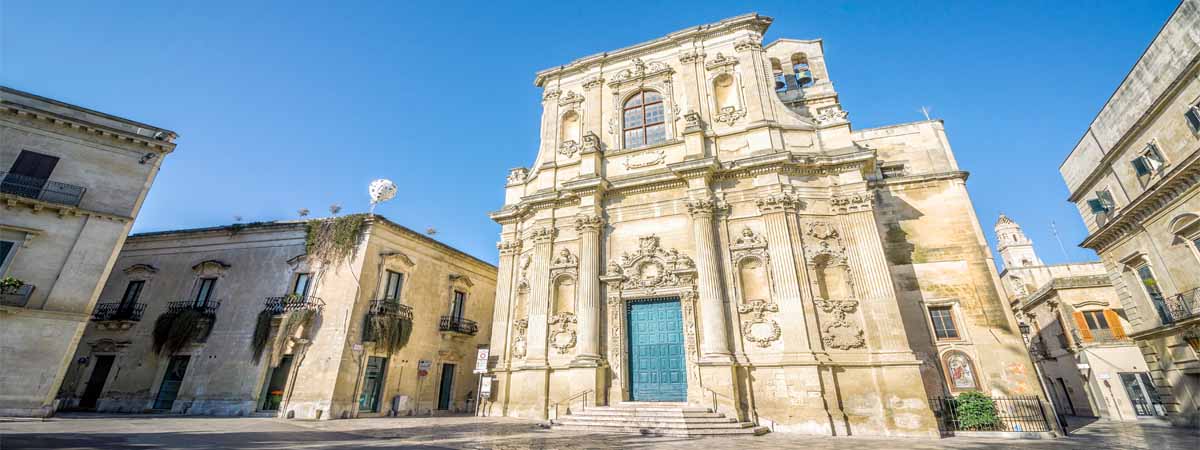
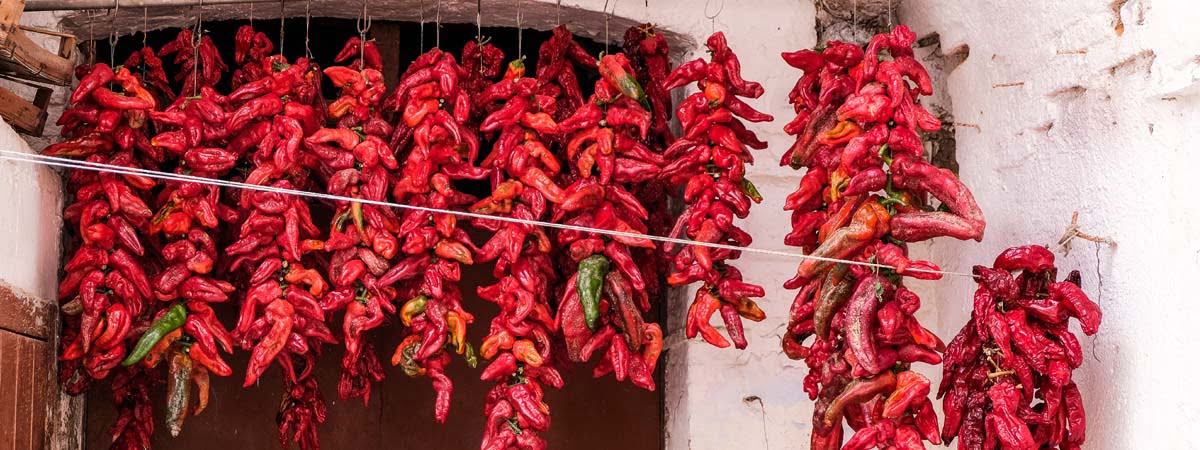
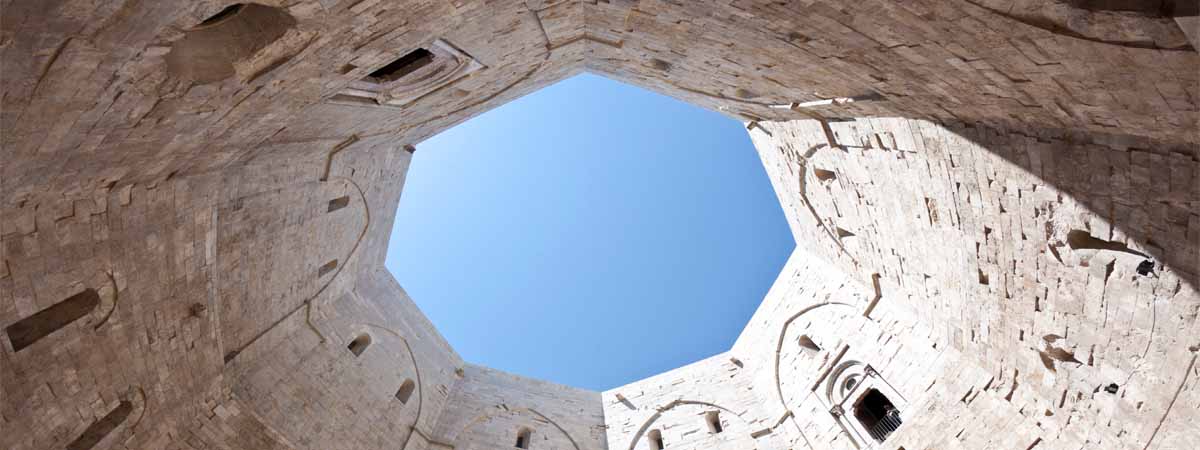
Travel Guides
[wudrelated include="1837"]
[wudrelated include="1855"]
